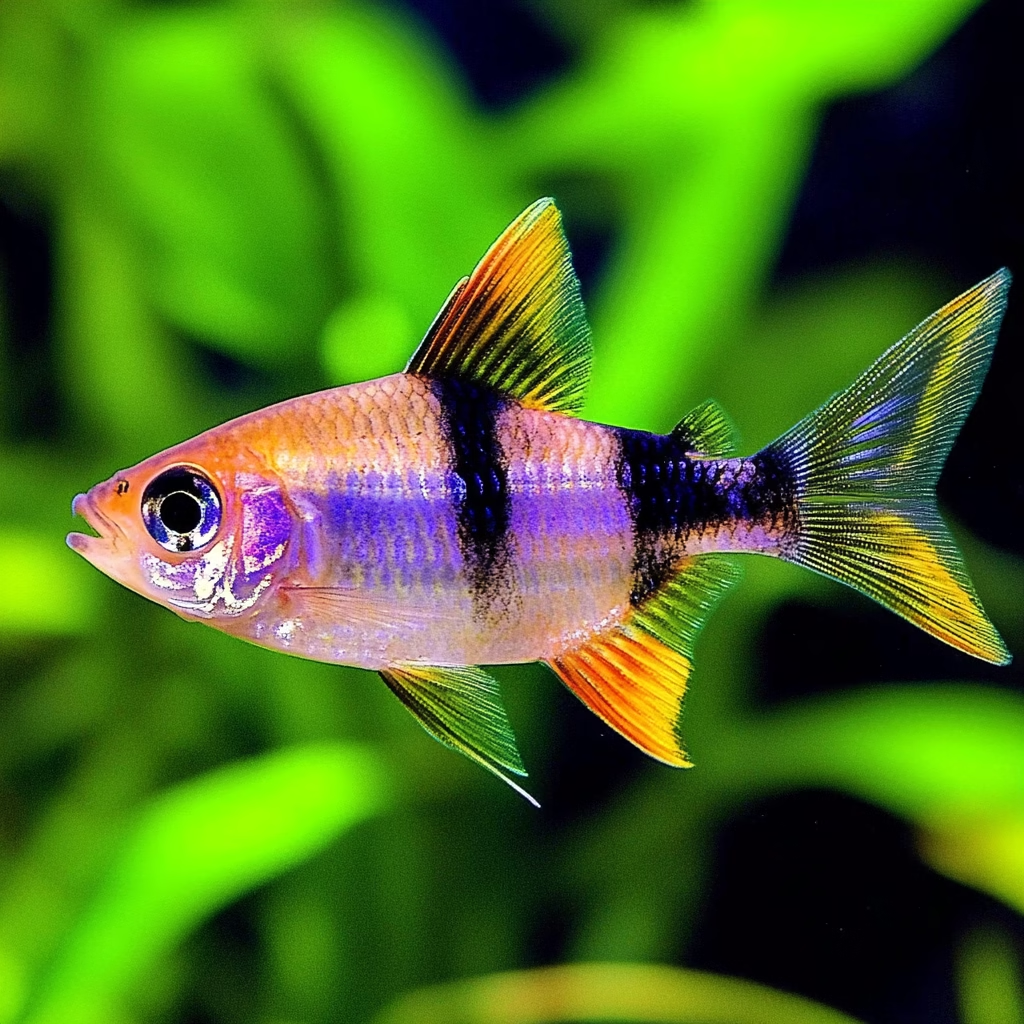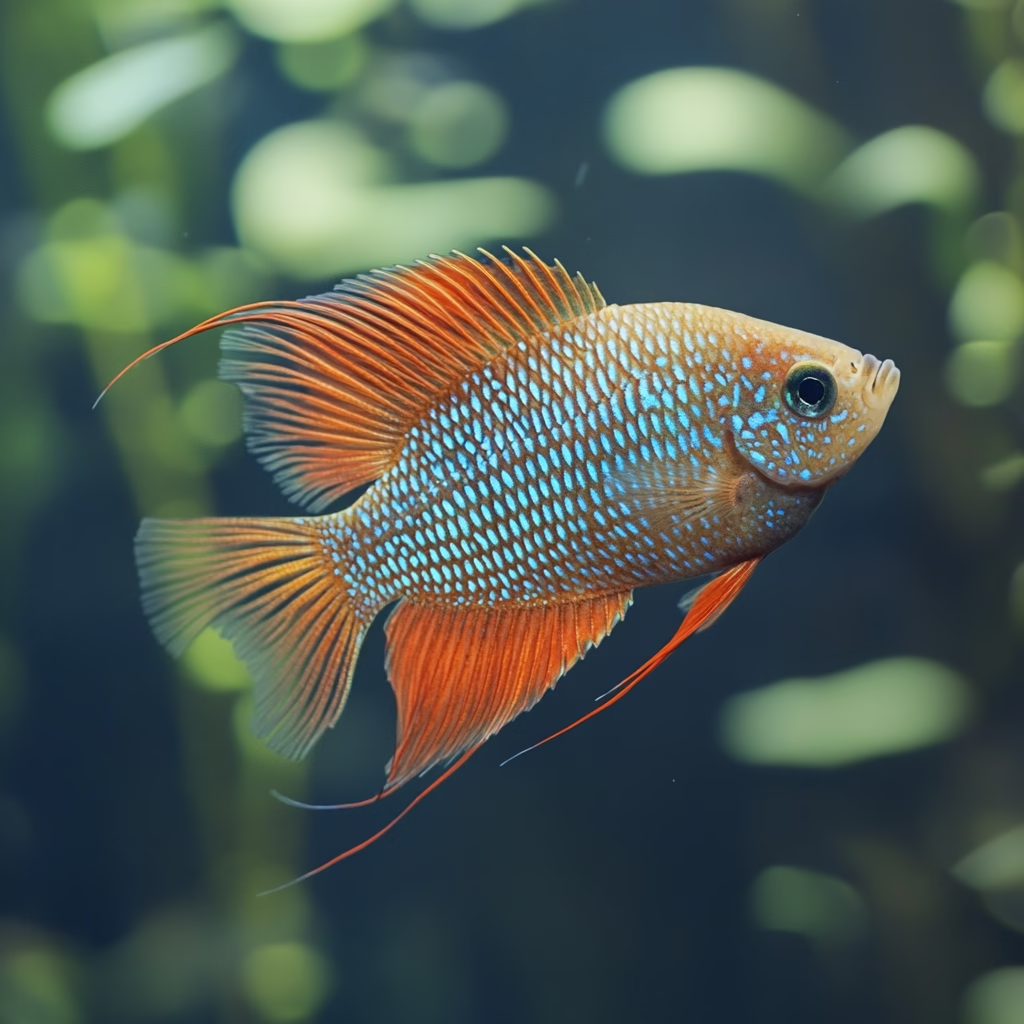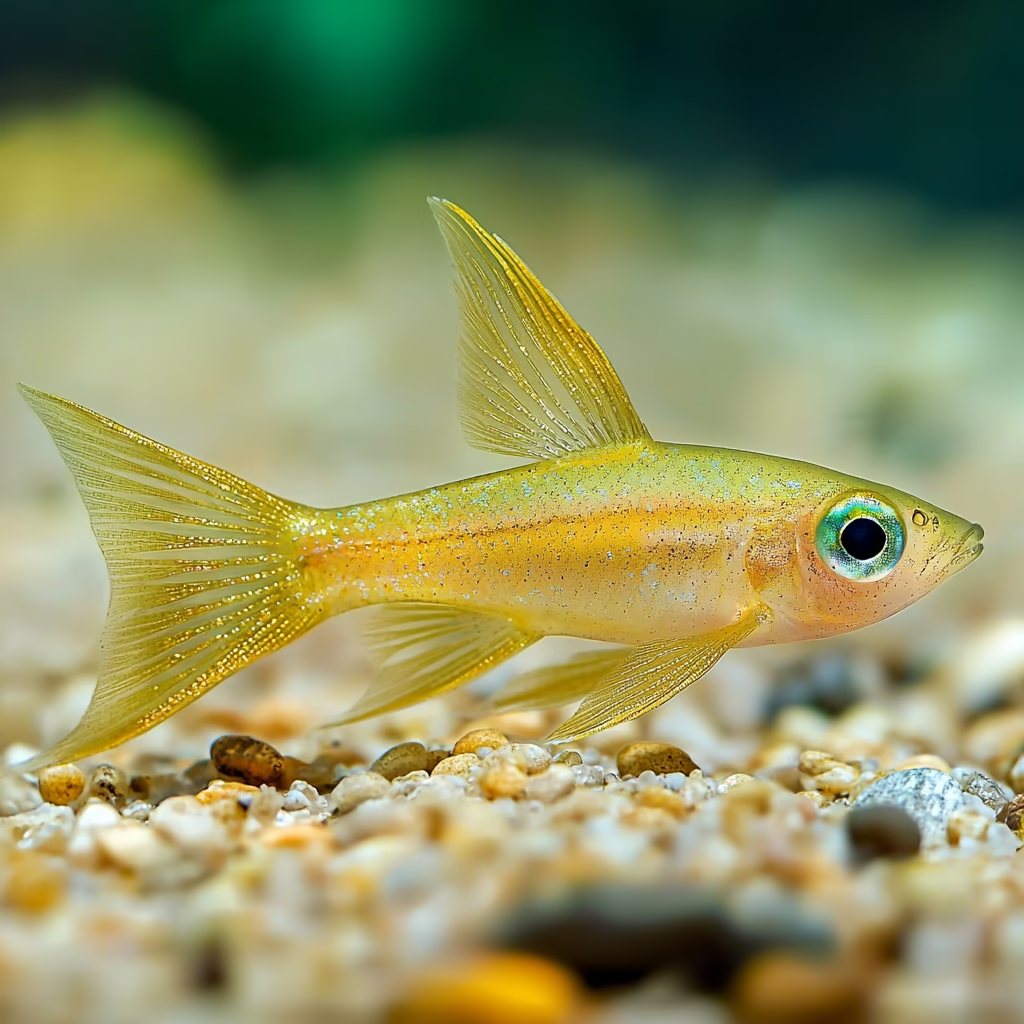Tiger barbs are among the most popular freshwater aquarium fish, beloved for their striking appearance and active nature. These small, colorful fish have earned their place in countless home aquariums, but keeping them successfully requires understanding their specific needs and behaviors. This comprehensive guide explores everything you need to know about tiger barbs, from their natural habitat to setting up the perfect tank environment.
What Are Tiger Barbs?
The tiger barb (Puntigrus tetrazona), formerly classified as Barbus tetrazona, is a small freshwater fish native to Southeast Asia. Their name comes from their distinctive black striped pattern, which resembles a tiger’s markings. These fish typically grow to about 2-3 inches in length and can live for 5-7 years when properly cared for.
Tiger barbs belong to the Cyprinidae family, making them distant relatives of goldfish and koi. Their compact size, combined with their vibrant coloration and active swimming behavior, has made them a staple in the aquarium hobby for decades.
Natural Habitat and Distribution
In the wild, tiger barbs inhabit clear streams, rivers, and tributaries across parts of Indonesia, primarily on the islands of Borneo and Sumatra. They prefer environments with moderate water flow, plenty of vegetation, and areas with both open swimming spaces and hiding spots.
These fish typically live in large schools in their natural habitat, where they can be found swimming in the middle water column. The dense vegetation and fallen branches in their native waters provide shelter and security for these small, sociable fish.
Tiger Barb Appearance and Varieties
Classic Tiger Barb
The standard tiger barb displays a golden to silver-orange body adorned with four distinctive black vertical stripes. Their fins often show splashes of bright red, and they have a striking black triangle on their dorsal fin. This high-contrast pattern serves as a warning to potential predators in the wild but makes for a spectacular display in home aquariums.
Popular Variants
Through selective breeding, several striking color morphs of tiger barbs have been developed:
- Green Tiger Barb: Features a greenish body with the classic black stripes
- Albino Tiger Barb: Has the traditional pattern but lacks dark pigmentation, resulting in red stripes on a pale body
- GloFish® Tiger Barb: Genetically modified to display fluorescent colors like electric green, pink, or orange
- Platinum Tiger Barb: Shows minimal striping on a silvery-white body
- Moss Green Tiger Barb: Exhibits a deeper green coloration with pronounced black markings
Each variant maintains the characteristic tiger barb shape and behavior while offering aquarists different aesthetic options for their tanks.
Tiger Barb Behavior and Temperament
Tiger barbs are known for their active, schooling behavior and somewhat feisty temperament. They are perpetual swimmers that rarely stay still, darting around the tank in coordinated movements when kept in proper groups.
Schooling Nature
As schooling fish, tiger barbs thrive in groups of at least six individuals, though larger groups of 8-12 provide even more security and encourage more natural behaviors. When kept in insufficient numbers, these fish often become stressed and may show increased aggression.
Fin Nipping Tendencies
Perhaps the most notorious aspect of tiger barb behavior is their tendency to nip at the fins of other fish. This behavior is especially pronounced when they’re kept in small groups or housed with slow-moving fish with flowing fins. The fin-nipping habit isn’t malicious but rather an expression of their naturally curious and slightly aggressive temperament.
Hierarchy Within Schools
Within a tiger barb school, a clear hierarchy typically develops. Dominant individuals may chase others briefly during feeding or when establishing territory. This behavior is normal and rarely leads to serious injury when the fish are kept in appropriate numbers.
Tiger Barb Tank Setup
Creating the right environment is crucial for keeping healthy, active tiger barbs that display their most natural behaviors.
Tank Size
A group of six tiger barbs requires a minimum tank size of 20 gallons. Their active swimming behavior demands horizontal space, so a longer tank is preferable to a taller one. For larger groups or community setups, 30 gallons or more is recommended.
Water Parameters
Tiger barbs are relatively adaptable but thrive within these parameters:
- Temperature: 74-79°F (23-26°C)
- pH: 6.0-8.0, with 6.5-7.0 being ideal
- Hardness: 5-19 dGH
- Ammonia and nitrite: 0 ppm
- Nitrate: Below 20 ppm
Filtration and Water Flow
Moderate water flow mimics their natural habitat in flowing streams. A filter rated for at least the tank’s volume provides adequate circulation while maintaining water quality. Canister filters or hang-on-back filters work well for tiger barb tanks.
Substrate and Decor
A dark substrate helps showcase the bright coloration of tiger barbs. Fine gravel or sand both work well. For decor, include:
- Driftwood pieces to create hiding spots
- River rocks or smooth stones for visual interest
- Live or artificial plants along the back and sides of the tank
- Open swimming space in the middle section
Lighting
Standard aquarium lighting is sufficient for tiger barbs. If keeping live plants, choose appropriate lighting for plant growth while avoiding excessive brightness that might stress the fish.
Plants for Tiger Barb Tanks
Hardy plants that can withstand the active swimming of tiger barbs include:
- Java fern
- Anubias species
- Vallisneria
- Amazon swords
- Cryptocoryne varieties
These plants provide shelter, improve water quality, and create a more naturalistic environment.
Diet and Feeding Tiger Barbs
Tiger barbs are omnivores that eagerly accept a wide variety of foods in captivity.
Staple Foods
A quality flake or pellet food formulated for tropical fish provides the foundation of their diet. Look for products with around 40% protein content and minimal fillers.
Supplemental Foods
To ensure optimal health and coloration, supplement their diet with:
- Frozen foods: Bloodworms, brine shrimp, daphnia
- Live foods: Mosquito larvae, tubifex worms (occasional treats)
- Vegetable matter: Blanched spinach, zucchini, or specialized algae wafers
Feeding Schedule
Feed tiger barbs 2-3 times daily, offering only what they can consume in 2-3 minutes per feeding. This prevents overfeeding while satisfying their active metabolism.
Tank Mates for Tiger Barbs
Choosing appropriate tank mates requires consideration of the tiger barbs’ active nature and fin-nipping tendencies.
Good Companion Species
- Other barb species (cherry barbs, rosy barbs)
- Fast-swimming tetras (black skirt tetras, serpae tetras)
- Danios (zebra danios, pearl danios)
- Corydoras catfish
- Small rainbowfish
- Bristlenose plecos
Species to Avoid
- Bettas and gourami (long, flowing fins invite nipping)
- Angelfish (vulnerable fins and slower movement)
- Very small, timid species like neon tetras
- Very slow-moving fish like discus
- Extremely territorial species that might outcompete tiger barbs
Breeding Tiger Barbs
Breeding tiger barbs in home aquariums is relatively straightforward compared to many other species.
Setting Up a Breeding Tank
A separate 10-gallon breeding tank provides the best environment:
- Temperature: 78-82°F (slightly warmer than community tanks)
- Filtration: Gentle sponge filter to prevent fry from being sucked in
- Substrate: Marbles or a mesh barrier to protect eggs from being eaten
- Plants: Java moss or spawning mops provide surfaces for egg attachment
Conditioning the Breeding Pair
Select the healthiest, most colorful specimens and condition them with protein-rich live or frozen foods for 1-2 weeks before introduction to the breeding tank.
Spawning Process
Female tiger barbs can lay 300-700 eggs during a single spawning event. After the eggs are fertilized, remove the adult fish immediately, as they will consume the eggs. The eggs typically hatch within 24-48 hours.
Raising Fry
Feed newly hatched fry infusoria or liquid fry food for the first few days, then gradually introduce baby brine shrimp and finely crushed flake food as they grow. Perform small, daily water changes to maintain water quality during this critical growth period.
Common Health Issues
Disease Prevention
Maintain pristine water conditions through regular water changes (25% weekly) and proper filtration. Quarantine new fish before adding them to an established tank to prevent introducing diseases.
Common Ailments
- Ich (White Spot Disease): Appears as white spots on the body and fins, treatable with appropriate medications and increased temperature
- Fin Rot: Frayed or decaying fins, typically resulting from poor water quality or injuries
- Internal Parasites: May cause weight loss and stringy feces, treatable with medicated foods
- Bacterial Infections: Can manifest as red streaks, sores, or cloudy eyes
Why Tiger Barbs Make Excellent Aquarium Fish
Despite their somewhat challenging reputation, tiger barbs offer numerous benefits to aquarists:
- Their striking appearance adds vibrant color to any tank
- Their constant, active swimming creates dynamic visual interest
- Their schooling behavior, when properly accommodated, is fascinating to observe
- They’re relatively hardy and disease-resistant when kept in appropriate conditions
- They’re widely available and affordable for beginning aquarists
Conclusion
Tiger barbs remain one of the most popular freshwater aquarium fish for good reason. Their striking appearance, active nature, and relatively straightforward care requirements make them excellent choices for both beginners and experienced aquarists. By understanding their specific needs—particularly their requirement for group living and appropriate tank mates—hobbyists can enjoy these beautiful fish for years to come.
With proper care, including appropriate tank size, water parameters, diet, and companionship, tiger barbs will reward their keepers with vibrant colors, fascinating behavior, and a lively aquarium display that few other species can match.







